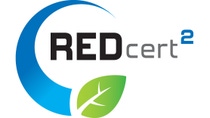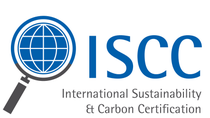Sustainability
The Biomass Balance Approach
Biomass Balance is an enabler for the green transformation
Mass balance as a chain of custody model allows to simultaneously use a mix of alternative and conventional feedstocks in existing production systems. BASF was among the first companies to introduce this concept in the chemical industry, recognizing its importance in enhancing product transparency and sustainability.
The biomass balance approach plays an important role in incorporating renewable feedstocks such as biomethane and bionaphtha as drop-in solution at the beginning of our complex, interlinked production network. This reduces the consumption of fossil feedstocks and fulfills our customers’ demand for circular or low-PCF solutions.
For our biomass balance portfolio, we source renewable raw materials that are certified according to recognized sustainability certification systems such as ISCC PLUS or REDcert2.
Benefits of the Biomass Balance Approach
How Mass Balance works
Mass Balance is a chain of custody model (see ISO 22095) that allows attribution of specific input material properties in a mixture of inputs to specific output materials.

Carbon atoms, often referred to as "C atoms," are the fundamental building blocks of organic compounds and can originate from various sources. Complex, interlinked production systems make it difficult to determine where the atoms end up. As fossil and renewable feedstocks are processed simultaneously, the raw materials cannot be directly physically assigned to the resulting derivatives. This complexity in production makes it challenging to trace the origin of each component in the final product.
Through a mass balance approach, we can assign the sustainable, renewable raw materials used at the beginning of our value chains to individual products and batches.
The promise: For every ton of purchased BMB products, we replace the required amount of fossil feedstock with renewable resources.
Independent certification systems like REDcert2 or ISCC PLUS verify and attest the proper replacement of fossil raw materials and the correct attribution.
Our BMB products: Sustainable alternatives for almost every industry
With more than 1.200 certified BMB products for use e.g. in superabsorbents, dispersions, plastics and intermediates we are already offering our BASF customers a differentiation opportunity in the market. Improved Product Carbon Footprints (PCFs) or the substitution of fossil resources are important levers for advancing the circular economy. Customers can also rely on the identical product quality and performance to which they are accustomed and benefit from a sustainable drop-in solution with an environmental impact.
Independent certification for BMB products
BASF has established a closed chain of custody from the renewable feedstock it uses through to the final product. An independent certification confirms that BASF has replaced the required quantities of fossil resources for the biomass balanced product with renewable feedstock. BASF’s biomass-balanced products are certified according to either the REDcert2 or the ISCC Plus certification scheme.


Sourcing of feedstocks for biomass balance products follows BASF‘s principles for responsible sourcing of renewable raw materials
- We source renewables to lower the carbon footprint of our products and to contribute to our transition to a circular economy. Sourcing waste-based renewables is part of this effort.
- We strive to minimize the environmental impact and maximize the efforts to halt and reverse biodiversity and ecosystem loss within our spheres of control and influence. We adhere to the country-specific access and benefit sharing regulations (Nagoya Protocol).
- We support the conservation of High Carbon Stock or High Conservation Value forests, peatlands and equivalent ecological and culturally important landscapes connected to the origins of our supply chains. In our sourcing we implement the BASF forest protection position.
- We expect good agricultural and forestry practices, especially to maintain soil health, minimize water use, reduce eutrophication risks and other negative effects on water quality along the supply chain.










